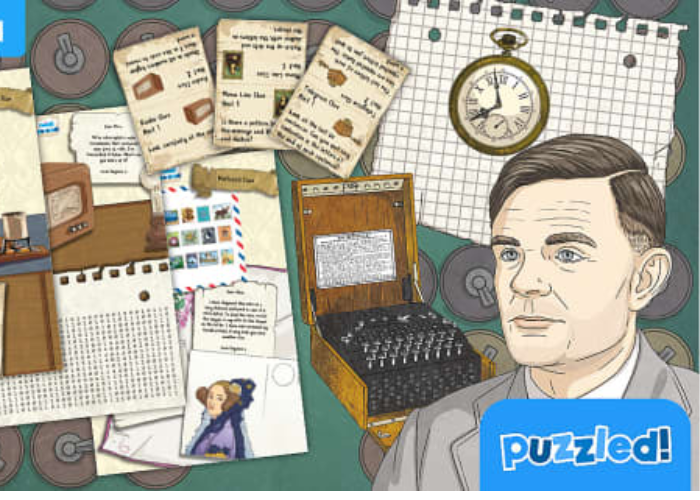Enigma Enacted: The Puzzle of Emotion in Visual Storytelling

Visual storytelling is an art form that has captivated humanity for centuries. Whether it’s through paintings, photographs, films, or animations, the ability to convey emotions and narratives through visual elements is a powerful tool that transcends language barriers and cultural differences. At the heart of this art lies the enigmatic interplay between visuals and emotions – a puzzle that storytellers meticulously piece together to create compelling and resonant narratives.
The Visual Language of Emotion
Visual storytelling operates on a unique and intricate language that communicates emotions through a series of carefully chosen visual elements. Colors, compositions, lighting, camera angles, and character expressions all collaborate to craft an emotional atmosphere that draws the audience into the story’s world. Just as an author selects words to evoke specific feelings, a visual storyteller curates images to convey an emotional journey.
Colors, for instance, play a pivotal role in setting the tone of a story. Warm hues like reds and yellows often evoke feelings of warmth, passion, and energy, while cooler tones like blues and greens can evoke calmness, melancholy, or isolation. The visual representation of a character’s environment, clothing, or even the overall color grading of a scene can significantly impact the emotional response of the audience.
Composition and framing are equally vital components of this visual language. A tightly framed shot might evoke a sense of intimacy or claustrophobia, whereas a wide-angle shot can create a feeling of expansiveness or vulnerability. The placement of characters and objects within the frame can establish power dynamics, relationships, and emotions without a single word spoken.
Character Expressions and Nonverbal Communication
The human face is an exquisite canvas for emotion. The slightest twitch of a lip, a raised eyebrow, or a tear glistening in the corner of an eye can convey emotions more eloquently than pages of dialogue. Visual storytellers harness the power of character expressions to connect the audience with the emotional core of the narrative.
Consider the “Mona Lisa” by Leonardo da Vinci. The enigmatic smile of the subject has puzzled art enthusiasts for centuries, inviting interpretations ranging from contentment to mystery. This single expression encapsulates the essence of visual storytelling – the ability to provoke emotion and spark contemplation through a seemingly simple visual element.
The Role of Visual Pacing
Pacing is a critical tool in visual storytelling that regulates the emotional journey of the audience. Just as a skilled author varies the rhythm of their writing, a visual storyteller controls the rhythm of their visuals to manipulate emotions. The strategic use of slow and fast scenes, moments of stillness and chaos, creates a dynamic emotional landscape that keeps the audience engaged.
Consider suspenseful scenes in thriller movies. The deliberate slowing down of the pacing, combined with close-up shots of characters’ anxious expressions, builds tension within the audience. This tension is then released in a burst of emotion when the suspense is finally resolved, creating a rollercoaster of feelings that mirror the characters’ experiences.
The Enigma of Subtext
One of the most intriguing aspects of emotion in visual storytelling is subtext – the underlying emotions and narratives that exist beneath the surface. Visual storytellers often craft layers of meaning that require active engagement from the audience to decipher. This engagement fosters a deeper emotional connection as viewers invest their attention and emotions in unraveling the enigma presented before them.
In the film “Lost in Translation,” directed by Sofia Coppola, the strained yet unspoken emotions between the two main characters are conveyed through subtle glances, body language, and shared experiences. The unvoiced connection they share resonates with the audience on a profound level, highlighting the power of subtext in evoking emotions that linger long after the story concludes.
Cultural Universality and Individual Interpretation
Visual storytelling possesses the remarkable ability to transcend cultural boundaries while simultaneously inviting individual interpretation. Emotions, being a fundamental aspect of human experience, are universally understood on a basic level. A character’s tears of joy or clenched fists of frustration resonate with viewers worldwide because these emotions are part of the human condition.
However, the way these emotions are interpreted and experienced can vary greatly based on an individual’s cultural background, personal experiences, and emotional sensitivities. Visual storytelling thus becomes a platform for both shared understanding and personal connection, where the enigma of emotion unfolds in myriad ways.
Embracing the Unresolved
Much like life itself, not all emotional puzzles in visual storytelling are neatly resolved. Sometimes, the ambiguity of an ending or the unspoken emotions in a character’s eyes leave the audience with a sense of lingering mystery. This open-endedness invites reflection, encouraging viewers to consider their own emotional responses and interpretations long after the story has concluded.
The final moments of Christopher Nolan’s film “Inception” exemplify this concept. The spinning top that wobbles but never quite falls – a visual cue that suggests both reality and a dream – leaves the audience grappling with the emotional ambiguity of the protagonist’s journey. The unresolved enigma of the spinning top becomes a metaphor for the intricate interplay between reality and emotions in our own lives.
Technology’s Influence on Emotional Resonance
As technology continues to advance, so too does the toolkit available to visual storytellers. CGI, virtual reality, augmented reality, and other innovations offer unprecedented opportunities to evoke emotions in novel ways. However, this expansion of possibilities comes with a caveat: the risk of prioritizing spectacle over substance.
While these technologies can enhance the visual experience, the core principles of emotional resonance remain unchanged. Regardless of the medium, the ability to create a connection between the audience and the story’s emotional core remains dependent on the thoughtful use of visual elements. A breathtaking visual effect might awe the audience, but it’s the emotional depth that will make the story truly unforgettable.
The Collaborative Symphony
Visual storytelling is not a solitary endeavor. It’s a collaborative symphony where directors, cinematographers, production designers, costume artists, and more work in harmony to compose an emotionally resonant narrative. Each contributor brings their unique expertise to the table, adding layers of emotional nuance that enrich the final product.
Consider the production design of Wes Anderson’s films. The meticulously crafted sets, distinctive color palettes, and whimsical details all contribute to the emotional atmosphere of the story. Every visual element, no matter how seemingly insignificant, plays a role in the larger puzzle of emotion that the film seeks to convey.
Conclusion
In the grand tapestry of human creativity, visual storytelling stands as a testament to our innate ability to communicate, connect, and empathize through the enigmatic language of emotions. Through careful curation of colors, compositions, expressions, and pacing, visual storytellers weave a narrative that transcends words and resonates deep within our hearts.
As we continue to explore new technologies and push the boundaries of what’s possible, it’s essential to remember that the true power of visual storytelling lies in its ability to evoke emotions, provoke thought, and inspire reflection. Just as an unsolved puzzle invites contemplation, the enigma of emotion in visual storytelling invites us to engage, interpret, and connect with stories on a level that is uniquely human.




